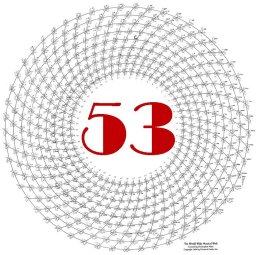Astrology
There’s music in all things, if men had ears: Their earth is but an echo of the spheres. — Lord Byron
All of the advanced ancient cultures had a class of scholars who were amazingly learned in mathematics, architecture, music theory, and astronomy/astrology. The precision of their astronomical observations was often astonishing. For most ancient cultures, audible sounds were seen as a reflection of the Cosmic Tone of one kind or another. Some version of the idea of Music of the Spheres was almost universal. Music released a “superphysical” energy from beyond the ordinary world. The best music mediated heaven and earth, and opened the doors for us to receive the blessings of the Divinely charged Cosmos. An example of this belief is found in the famous passage in Psalm 19: “The heavens declare the glory of God… Day unto day uttereth speech.”
In ancient cultures, astrology began as the study of the Cosmic Tone (or Om). The twelve signs of the zodiac were aligned with the twelve chromatic notes of the scale. This is why we have twelve months, twelve hours of the day and twelve hours of the night. The Chinese also believed that every body has a sound, and that musical harmony is about relatedness and balance of the forces of yin and yang (feminine and masculine). The entire universe is sustained by the six yin and six yang forces of the Cosmos. To this day, our musical instruments are pitched to twelve chromatic notes and the seven scalar notes of the then-known planets. However, no ancient astronomer ever imagined that the movement of the planets was symmetrical! Each planet traveled through the night sky at a different speed; when the ancient scientists turned their attention to music theory, they were not at all surprised to discover that the overtones are not symmetrical either. Unsurprisingly, the ancient Chinese considered the 12-eq tuning system (yes, they were able to create a mathematical formula for pitching a chromatic scale in 12-eq) to be so out-of-tune with both the natural harmonics and the nature of the Cosmos that it was never considered worthy of being employed for any purpose. In 1712 A.D. the Ch’ing Dynasty explicitly rejected 12-eq tunings again, since it was becoming more known and used in the world at large. It may have also been a rejection of the continuing imperialistic assaults on all ancient cultures, which as I have said before had its musical component in 12-eq.
Lu Bu Ve wrote, “Heaven and Earth are engaged in a cycle. Every ending is followed by a new beginning; every extreme is followed by a return. Everything is coordinated with everything else. Sun, Moon and stars move in part quickly, in part slowly. The four seasons bring heat and cold, shortness and length, softness and hardness. All beings have their origins in The Great One; they form and perfect themselves in the duality of darkness and light. Sound arises out of harmony. Harmony arises out of relatedness. Harmony and relatedness are the roots from which music arose. When the world is at peace, when all things are at rest, then music can be brought to perfection. Perfected music has its effects. Perfected music arises out of balance. Balance arises from justice. Justice arises from the true purpose of the world. Therefore one can speak of music only with one who has recognized the true purpose of the world.” To Lu Bu Ve, astrology was the science of celestial sounds. Whether you believe in astrology or not, the idea that music is somehow connected to the Web of the Cosmos and life’s true purpose has a deep resonance for people who love music more than they can express.
If you would like to learn more about the ancient tunings worldwide you can buy the entire book, The Grand Unified Theory of Music, in pdf form for $25 with hundreds of embedded musical examples of scales and chords from all over the world.
A free introduction to what The Grand Unified Theory of Music offers is on this website and includes both text and a few musical examples from each webpage. If you would like to learn more about this chapter and the full contents of this entire e-book, you can buy The Grand Unified Theory of Music for $25, with hundreds of embedded musical examples of scales and chords from all over the world — and ideas for how to set up your computer system —
HERE.
You’ll get a personalized password you can use to see the entire e-book. Inside the full book, you will also get a link to the complete pdf file of this e-book, which you can read on your Kindle or similar device. The links to the hundreds of mp3 sound files – the same ones you can hear on the website — will also be included. This is “Version 1.0” of The Grand Unified Theory of Music. Because it is an e-book, additions, corrections and improvements in the sound may be added at any time. The Grand Unified Theory of Music is Copyright © 2018 by Christopher Mohr. All rights reserved.
One person per password. Sharing this password with others is a violation of copyright. Do not allow others to use your password or link to the pdf file!
